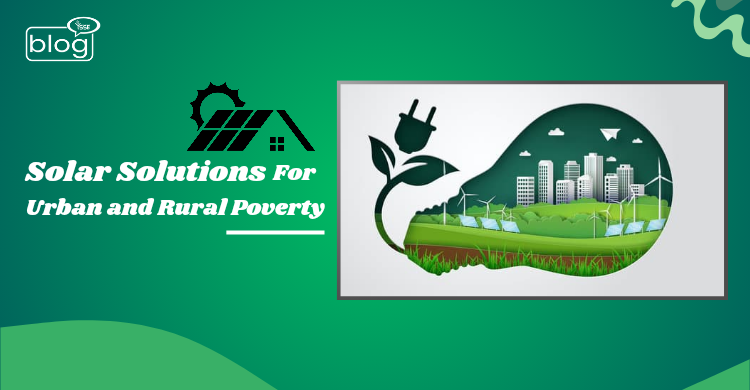Having affordable and reliable electricity is super important for a better life. But still millions of people don’t have proper access to it. This means kids can’t do their homework at night, hospitals struggle to provide care and businesses can’t expand. This issue is even more critical in low-income urban neighborhoods and remote rural areas.
Solar energy is a great way to solve this problem. It is available in large amounts and can be used even in remote areas. This means solar power can help both cities and villages get equal access to electricity. Let’s see how solar energy is changing lives and helping to reduce poverty in both urban and rural areas.
Solar Energy for Social Justice
Electricity is something everyone should have but many poor communities still don’t have proper access to it. This is unfair because poor families end up spending more money on things like kerosene.
Solar energy can bring social justice by:
• Bringing clean and affordable energy to communities that don’t have enough.
• Creating jobs for people to set up and fix solar panels.
• Protecting people from health problems caused by fuels like kerosene.
But to help everyone, governments and organizations must solve money and education problems.
Rural Electrification Through Solar Power
Many villages still don’t have electricity because setting up power lines is costly and difficult. Solar power is a cheaper and easier solution.
How Solar Energy Helps Rural Communities:
• Solar Home Systems (SHS): Families can set up solar panels and batteries to power essential items like lights, fans and TVs helping them live more comfortably without relying on the grid.
• Solar-Powered Microgrids: Small solar power stations can provide electricity to entire villages so that everyone has access to reliable energy even in remote areas.
• Solar Irrigation Pumps: Farmers can use solar-powered pumps for watering their crops which helps them avoid expensive diesel generators and lowers their farming costs.
For example in Bangladesh by 2018 almost 6.8 million SHS were set up giving electricity to homes without power. This has helped with education, supported small businesses and even reduced indoor air pollution by replacing kerosene lamps.
Off-Grid Solar Solutions for Energy Access
Off-grid solar systems are a practical solution for places like urban slums and remote villages where regular electricity is not reliable or available.
Benefits of Off-Grid Solar Solutions:
• These systems can be installed anywhere from a single home to a whole community.
• The prices have become much lower making them easier to afford.
• People can now pay in installments, making it easier to manage the cost.
But there are still challenges like maintaining the systems, getting technical help and finding affordable financing.
Community Solar Projects for Urban Areas
Not everyone in cities can set up solar panels on their rooftops. Especially people who rent their homes or live in crowded areas. Community solar projects solve this problem by letting several households share energy from a large solar farm.
How Community Solar Works:
• A company or government sets up a large solar power plant usually in an open space.
• People or businesses in the area can join the project by signing up.
• Those who join receive a portion of the solar energy produced and get lower electricity bills as a result.
This way even people in cities who don’t have their own rooftops can use solar energy. It helps low-income families save money on electricity while also reducing the use of dirty fuels like coal and gas.
Solar-Powered Microfinance for Energy Access
Solar energy can also be made easier to access through small loan programs. Many low-income families find it hard to pay the upfront cost of solar panels. Microfinance organizations provide small loans that let people buy solar systems and pay in smaller amounts over time. This makes it possible for more families to enjoy the benefits of clean and affordable energy.
Benefits of Solar Microfinance:
• It helps families move to solar energy without having to pay a big amount all at once.
• It promotes financial inclusion by giving loans to people who don’t have access to regular banks.
• It helps local businesses by providing them with reliable electricity to run their small businesses.
Solar energy has the ability to break the cycle of poverty in both cities and villages by offering affordable, clean and long-lasting electricity. Solar projects in cities solar power is making a real difference in people’s lives.
For everyone to benefit from solar power Governments, Businesses and Individuals need to work together to make it both affordable and accessible. By investing in solar energy we’re taking an important step toward making energy fair for everyone. No matter where they live or how much they earn.
To read more blogs, Click here
Writer
Anika Sharmila
Intern of Content Writing Department
YSSE

